Northern Chile is marked by the dramatic, sweeping landscapes of the Atacama Desert. Flanked by the Andes to the west and the cold Pacific Ocean to the east, Atacama is the driest desert in the world. The Pacific Ocean is kept cold by the Humboldt current heading north from Antarctica, meaning there’s little precipitation or chance of rain clouds forming. The few that do are kept at bay by Chile’s Coastal Mountain Range.
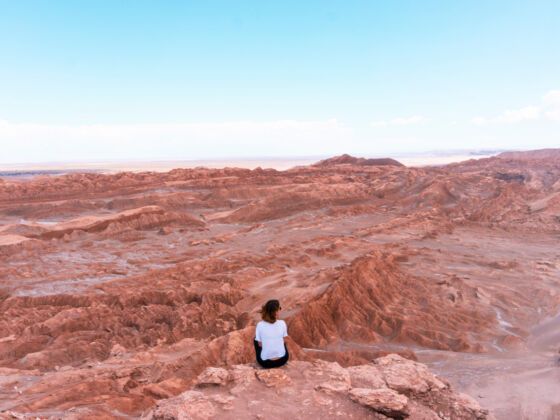

How to See Chile’s Otherworldly Atacama Desert, the Driest Place on Earth
The Atacama Desert receives so little rain that its residents can go years without seeing it. But the mighty Andes range traps storms, whose water seeps underground and emerges in the Atacama’s eastern edge. This water creates, over millenniums, briny lakes, salt flats, bizarre salt sculptures, and otherworldly geology. The Atacama Desert’s extreme conditions and unusual vastness make it a bucket list destination for adventure-seeking travelers, landscape photographers, and outdoors enthusiasts. It’s even one of our favorite places to take kids.
Most visitors to the region chose to base themselves in the small town of San Pedro de Atacama, a groundwater-fed oasis. San Pedro is located close to the Atacama Desert’s prominent landmarks, from salt flats to volcanoes. The town center is filled with tour operators who offer guided desert activities such as horseback riding, sandboarding, and stargazing. These tours are the best way to take full advantage of the Atacama’s natural wonders surrounding San Pedro.
Regardless of what you plan to do in this special place, you’ll want to arrive equipped and organized. Here’s what you need to know before booking a trip to the Atacama Desert in Chile.
When to visit Chile’s Atacama Desert
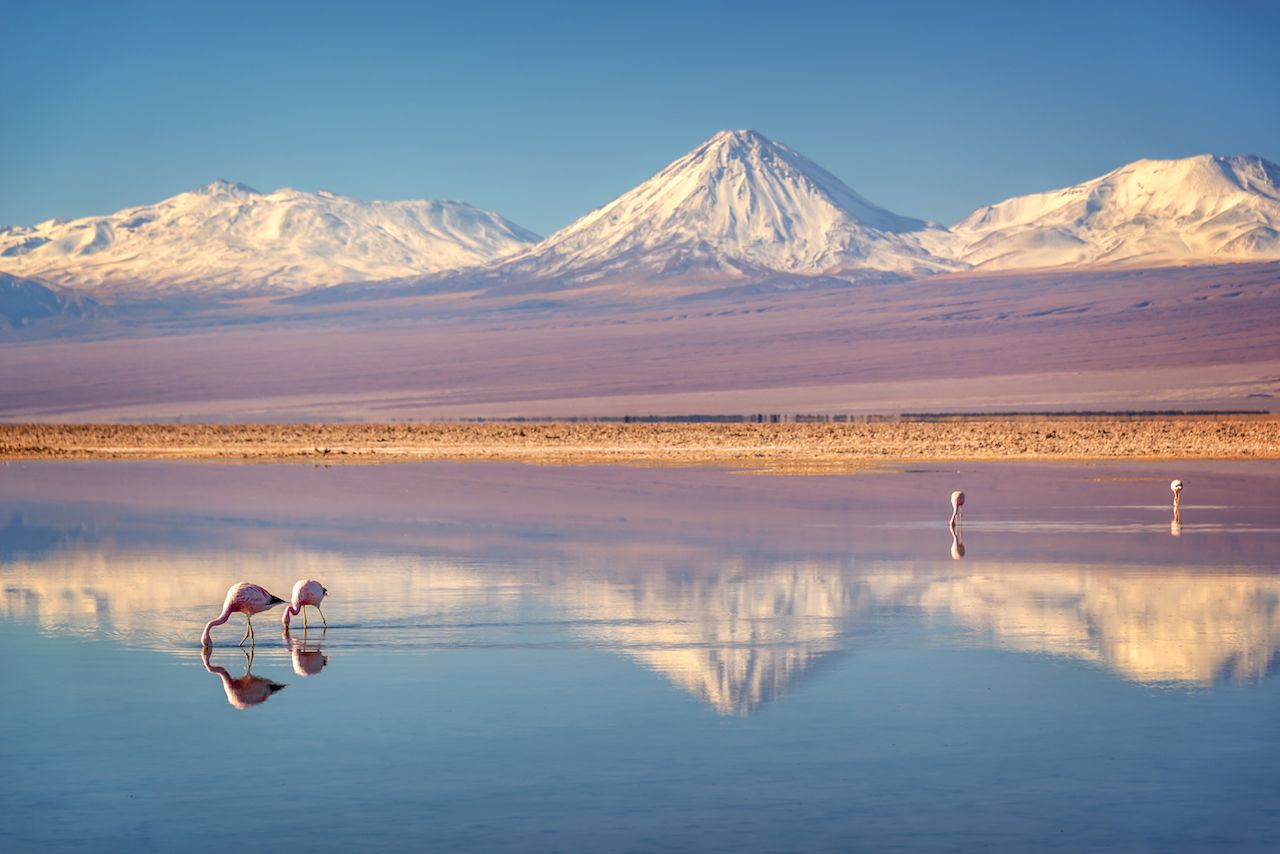
Photo: Delpixel/Shutterstock
There are three distinguishable seasons in the Atacama, despite it being a desert. Since the Southern hemisphere’s summer season is from November through February, this is the most popular time for tourists to visit, despite the days being long and scorchingly hot. Temperatures reach upward of 90 degrees Fahrenheit during the day, and the dry climate exacerbates the heat.
Most tours and activities in the summer season run in the early morning or late afternoon to try t to avoid the hottest part of the day. However, once the sun sets, temperatures cool off and stay around 60 degrees since there’s no moisture in the air to retain the heat.
The Atacama is the least crowded during its shoulder seasons, from March to May and September to November. Temperatures during these months are typically in a pleasant range between 75 and 80 degrees. To avoid the blistering heat and crowded tours and hotels, consider visiting during the winter. From May to September, daily temperatures hover around 70 degrees and can drop below freezing overnight.
How to get there
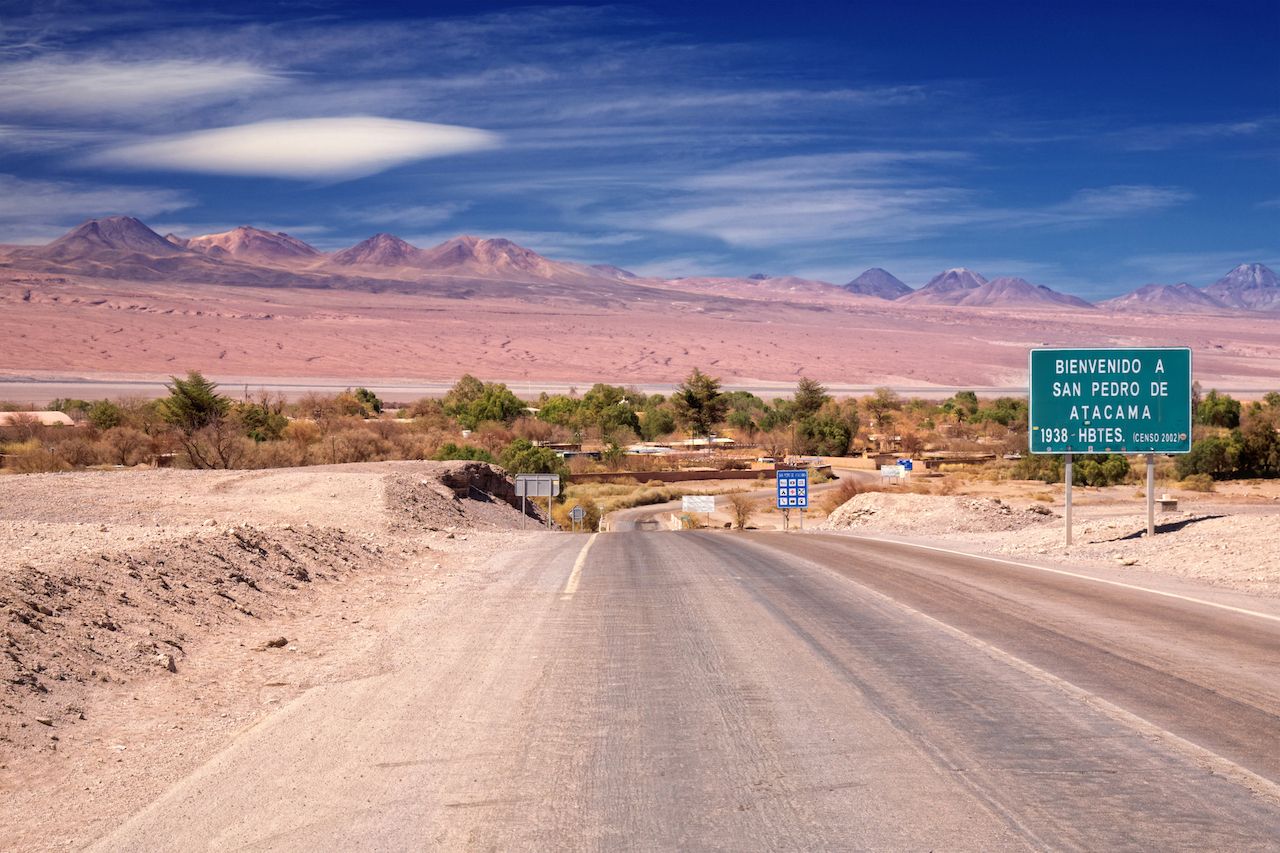
Photo: Nataliya Hora/Shutterstock
From Santiago, you can take a two-hour flight to Calama and book a car transfer to San Pedro. The car journey takes around one hour and is usually included in hotel rates. This is the easiest and quickest way to arrive in the Atacama, but it’s not the only way. Since having a rental car is ideal for exploring the region, you could also rent one at the airport and drive to San Pedro. Your rental will almost certainly be a desert-road-ready, four-wheel-drive vehicle.
Alternatively, you can take a local bus. From Santiago, you’re looking at anywhere from 20 to 25 hours of a long, slow slog. Those planning to brave the bus journey should consider breaking it up with stops in other towns along the way.
Getting around

Photo: Dmitry Chulov/Shutterstock
Renting a car is the optimal way to get around the Atacama Desert, especially if you want to have total freedom over your explorations. Without a vehicle, you’ll be entirely dependent on booking tours to transport you into the desert. A rental will inarguably give you more liberty to explore the natural sights at your leisure and on your schedule. Also, if you’re hoping to hit up landmark locations at specific hours for lighting and photography, having a car is vital.
Rental Cars is an excellent resource for finding the option that’s right for your budget. Unfortunately, tourists outnumber available cars in the desert, especially during peak season, so make sure you book your rental as far in advance as possible. However, many accommodations in San Pedro are relatively close to the town center, so you should be able to walk in and out of town without a problem.

Photo: streetflash/Shutterstock
Bike rentals are another affordable transportation alternative to get you into town but are generally not recommended as a means to get you to the farther afield. You can find bikes to hire at a number of vendors in the town center, and most accommodations offer bike service. Shop around before you rent and make sure you try and haggle — you should be able to negotiate for as little as $4 per day. Depending on where you stay, your accommodations may also have a limited number of bikes available for guests.
Where to stay in San Pedro de Atacama
While there’s plenty of accommodation to choose from in San Pedro de Atacama, prepare to spend more than you would in other parts of Chile. There’s also a more significant gap between what hostels and hotels provide here. Budget options in the Atacama can be very bare-bone as far as amenities are concerned. For example, breakfast, Wi-Fi, towels, and even bed linens are not always guaranteed. Double-check everything that is included when you make your booking so that you aren’t surprised upon check-in.
Tierra Hotel
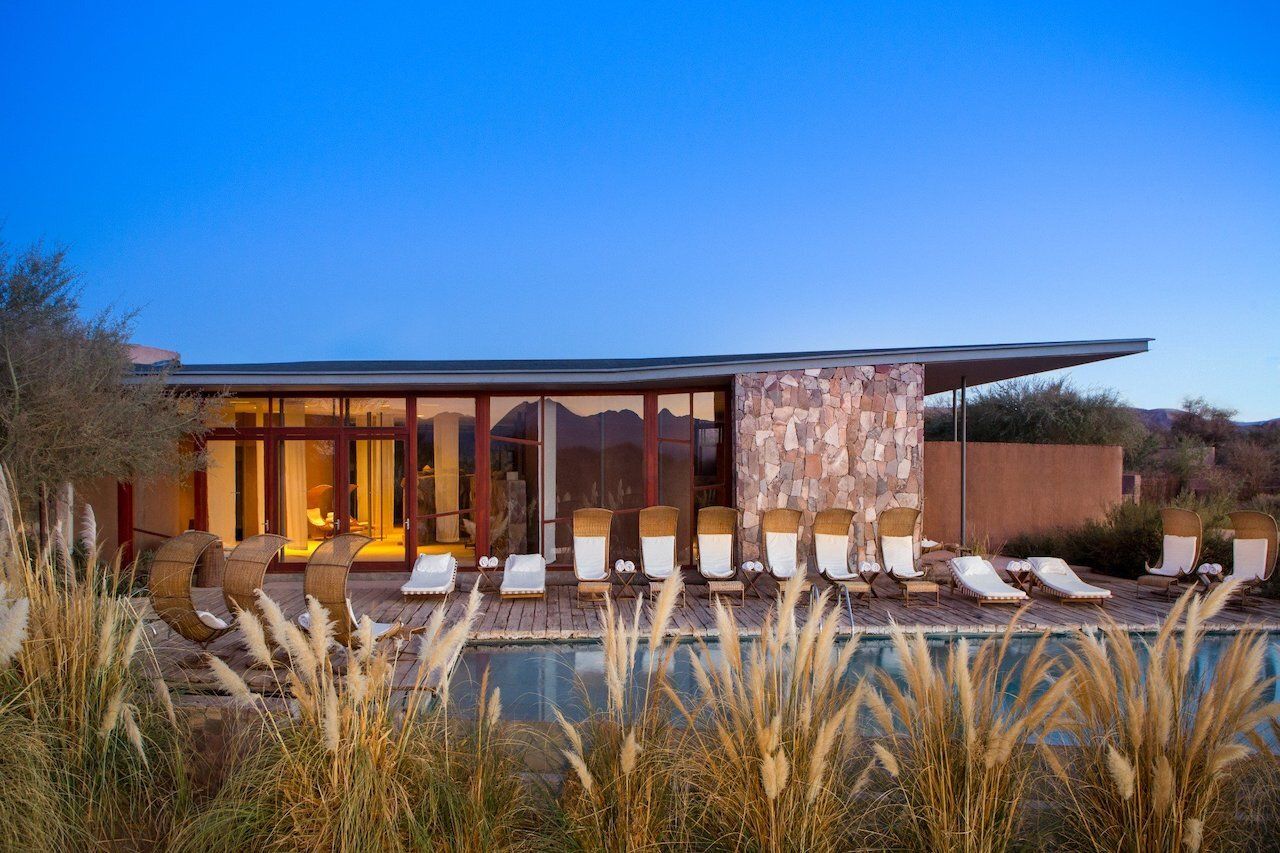
Photo: Tierra Hotels
The rooms at the Tierra Hotel overlook the Andes mountain range, and cultural nods are integrated into their design in the form of cowhide rugs and handcrafted pottery. The hotel has somehow managed to find the perfect balance between clean, minimalist interiors while incorporating the surrounding natural landscape. Tierra Hotel’s big draw is its swimming pool, which is sure to cool you off a hot desert day. In addition, they have larger family rooms for those traveling as a group.
Where: San Pedro de Atacama, Antofagasta, Chile
Aji Verde Hostel San Pedro
Aji Verde Hostel offers budget travelers the chance to fully embrace their desert surroundings by sleeping in tents supplied with basic cots. Aji Verde is only a short walk from San Pedro’s center, where you’ll find restaurants and local operators to book tours with. Free Wi-Fi and cold showers make the hostel a nice place to cool off and unwind after a day spent out in the heat. Aji Verde is a favorite among backpackers looking to meet fellow travelers.
Where: Ckilapana 69 c, San Pedro de Atacama, Antofagasta, Chile
Hotel Desertica
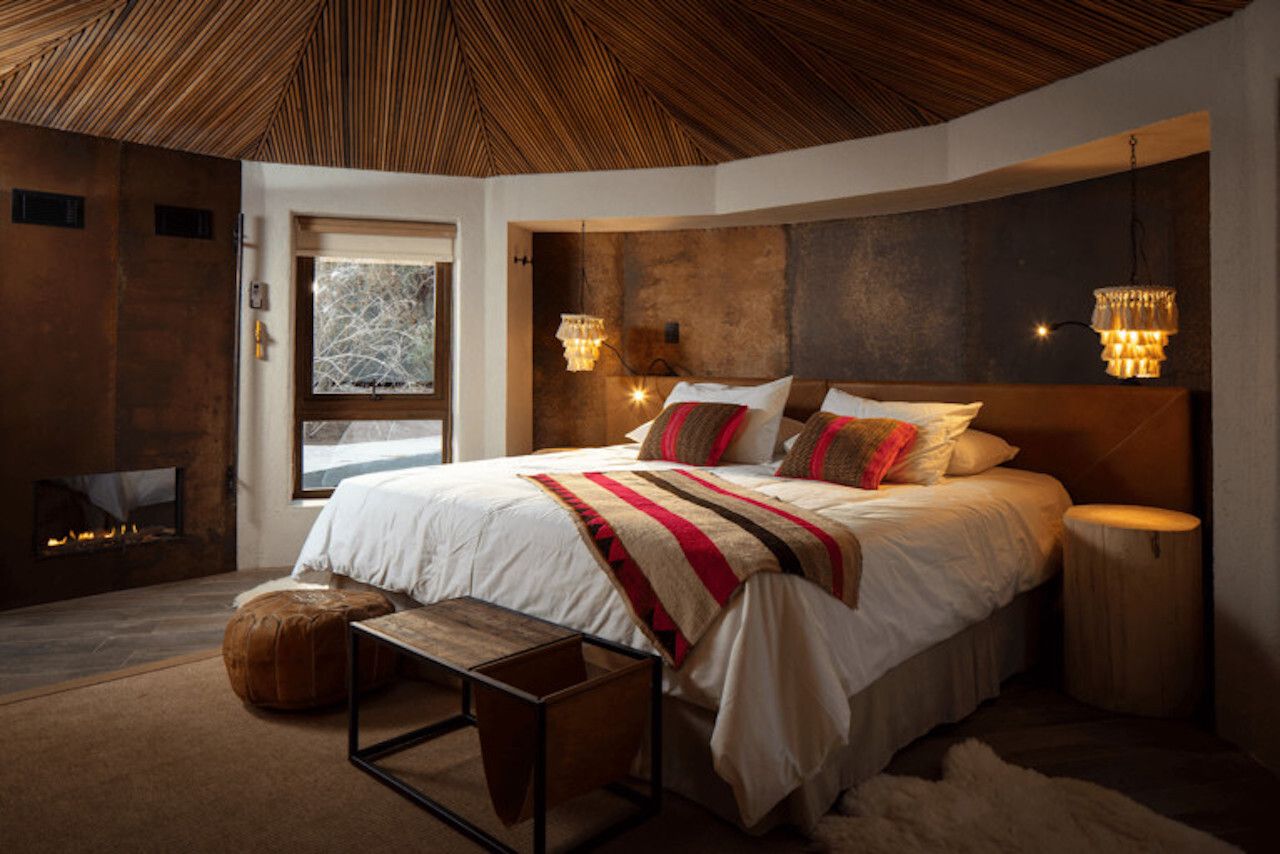
Photo: Desertica Hotel
Any accommodation located in the middle of a desert that features a garden surely sets the benchmark for luxury. Throw in a pool, hammocks swinging in the shade, and beautiful linen cabanas, and you’ve got the makings of a memorable stay at Hotel Desertica. Sustainability is at the center of the hotel’s ethos. It utilizes solar energy and supplies guests with locally sourced, biodegradable grooming products. This accommodation option is ideally suited for couples seeking romance and respite in the desert.
Where: Caracoles 455, San Pedro de Atacama, Antofagasta, Chile
Things to see and do in Chile’s Atacama Desert
Nature lovers will find no shortage of things to keep them busy in the Atacama. Many of the major landmarks and outdoor recreation here require booking a guide through a tour operator. These are found all over San Pedro’s town center. Most hotels and hostels also can book tours for you.
Piedras Rojas — Red Rocks
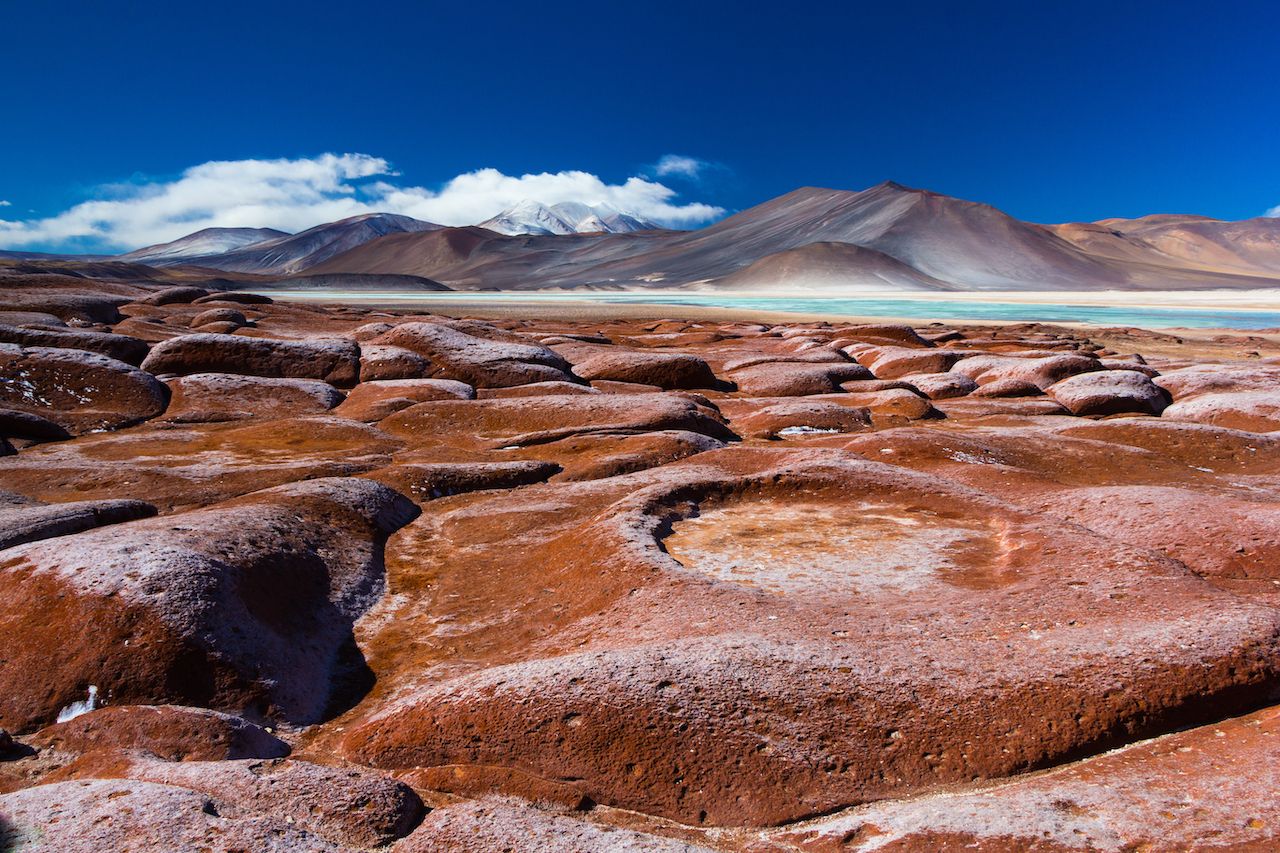
Photo: obscur/Shutterstock
Piedras Rojas, or Red Rocks as you may have heard them referred to, are a marvel of nature. Formed by the oxidation of iron, Piedras Rojas are as red in real life as they are in any photos online. Many travel companies in San Pedro offer tours to the Red Rocks, with guides who can talk you through their geological significance. Make sure you bring chapstick and something to protect your face since the flat, ruby-colored landscape is prone to strong wind gusts.
Puritama — Termas de Puritama
Photo: In art drops
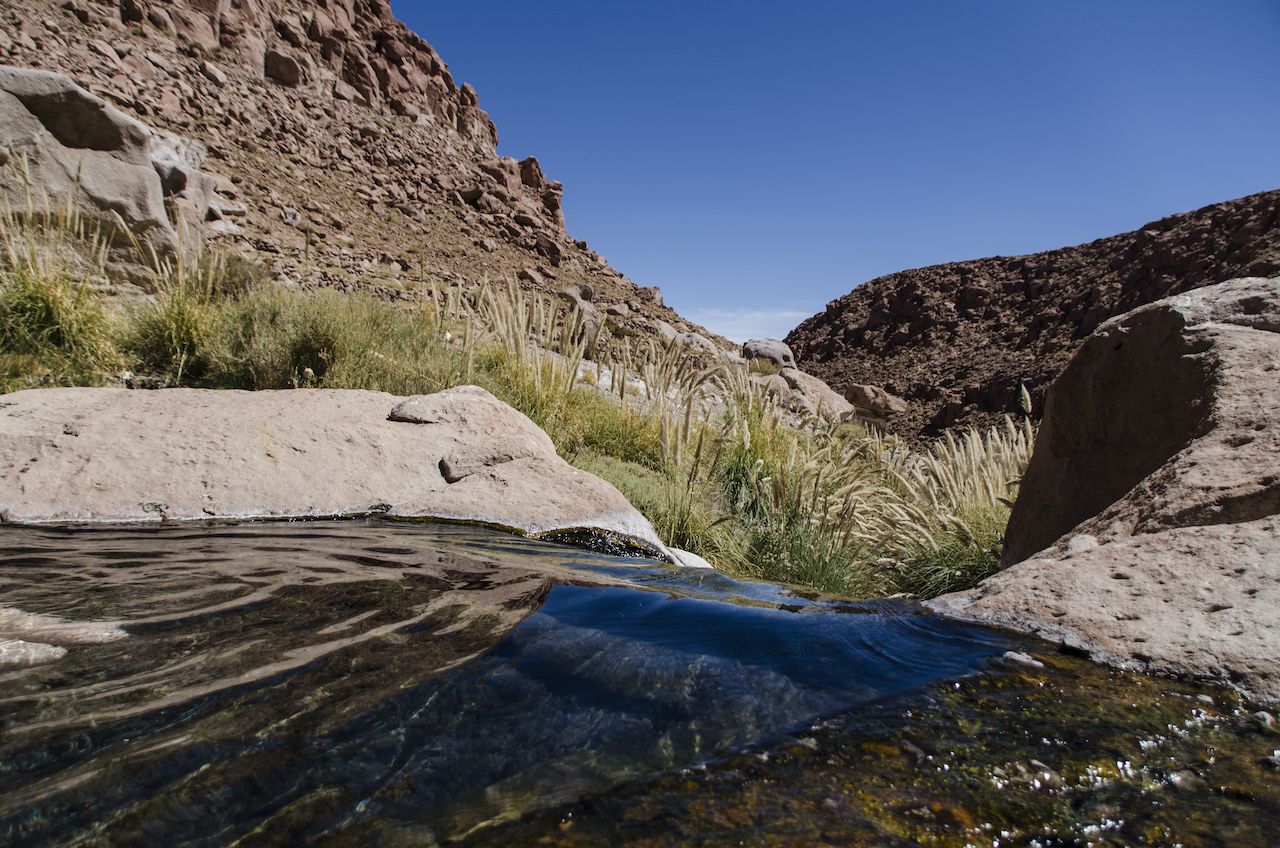
Photo: Gonzalo Sanchez/Shutterstock
Puritama, which means “hot water” in a pre-Incan language indigenous to the area, is a series of thermal pools set at the bottom of a canyon. Ninety-degree water flows from underground, pumping into the natural sulfuric pools for your soaking pleasure. Many locals believe the water in each pool contains healing properties that reduce stress, fatigue, and arthritis. Admission to Puritama is roughly $24, but it’s worth every penny — a hot pool at the end of a sandy day in the desert feels nothing if not rejuvenating. The only item to consider other than the expense is transport. Puritama’s location 19 miles north of San Pedro requires that you book a tour to get you there or have a rental car to drive on your own.
Valle de la Luna — Valley of the Moon
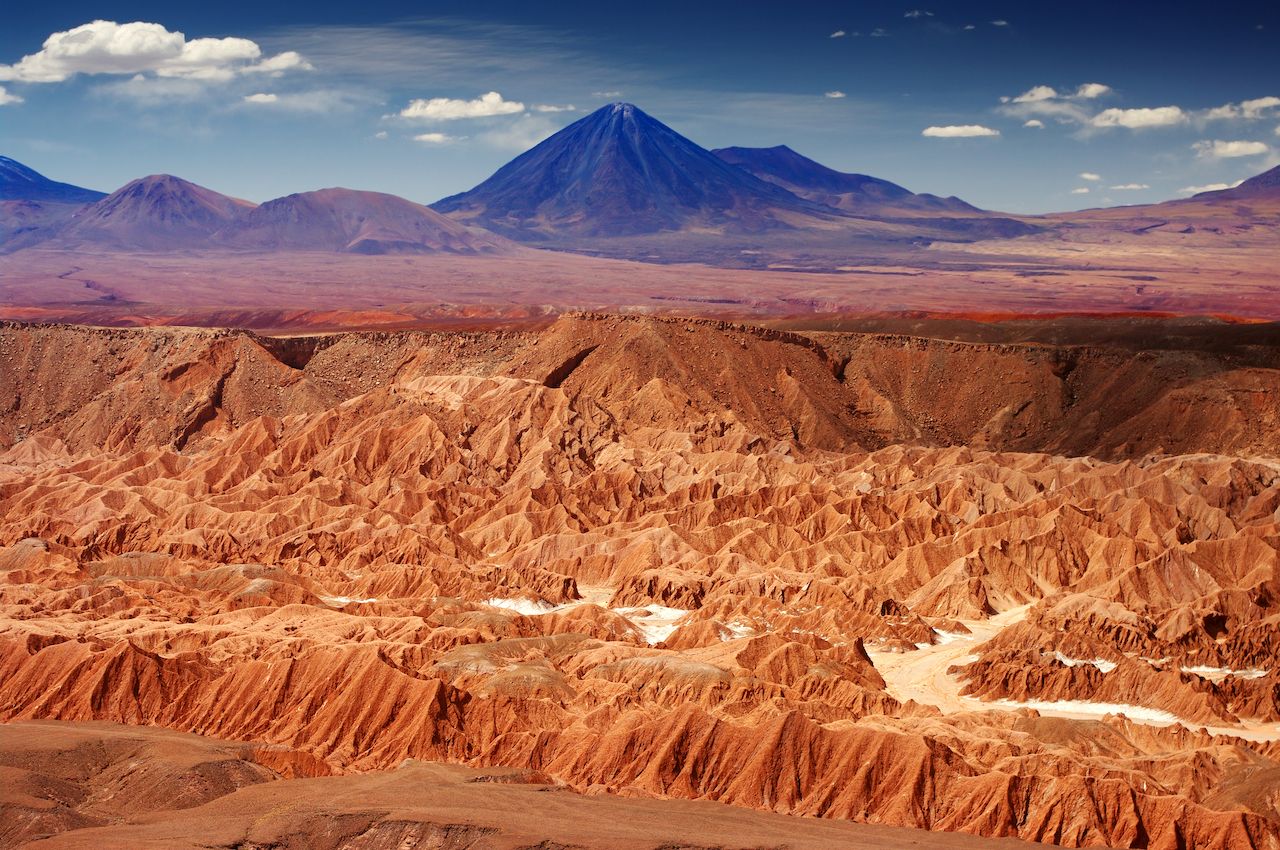
Photo: Joolyann/Shutterstock
A few miles west of San Pedro is the Valle de la Luna. The unique stones in this Valley of the Moon have been formed over time by wind and water erosion. Photographers delight in the natural textures and patterns of the valley. The sky turns into cotton candy colors as the sun sets, so time your visit at golden hour if at all possible — you won’t be sorry.
Mano de Desierto — Hand in the Desert
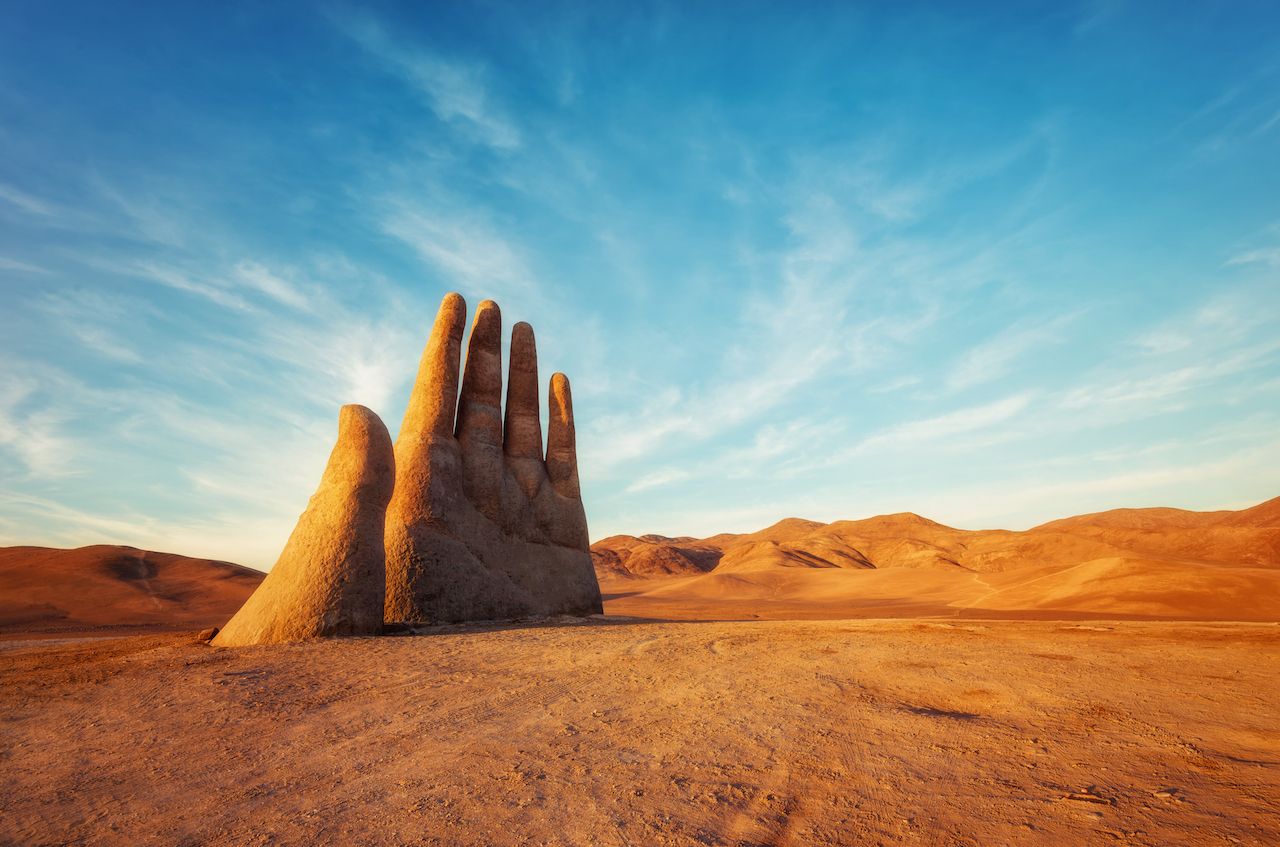
Photo: Lukas Bischoff Photograph/Shutterstock
You’ve undoubtedly seen Mano de Desierto on your Instagram feed. Mario Irarrázabal sculpted the giant hand in the 1980s to represent Mother Nature embracing the landscape. Getting to the 36-foot-tall art installation requires you to have a car. If you’re very, very adventurous (and in good physical fitness), you can bike out to the hand, but this isn’t recommended for the average tourist due to the speeding traffic. Mano sits off the Pan-American highway, which has a reputation for trucks zooming along its well-maintained asphalt.
Horseback riding
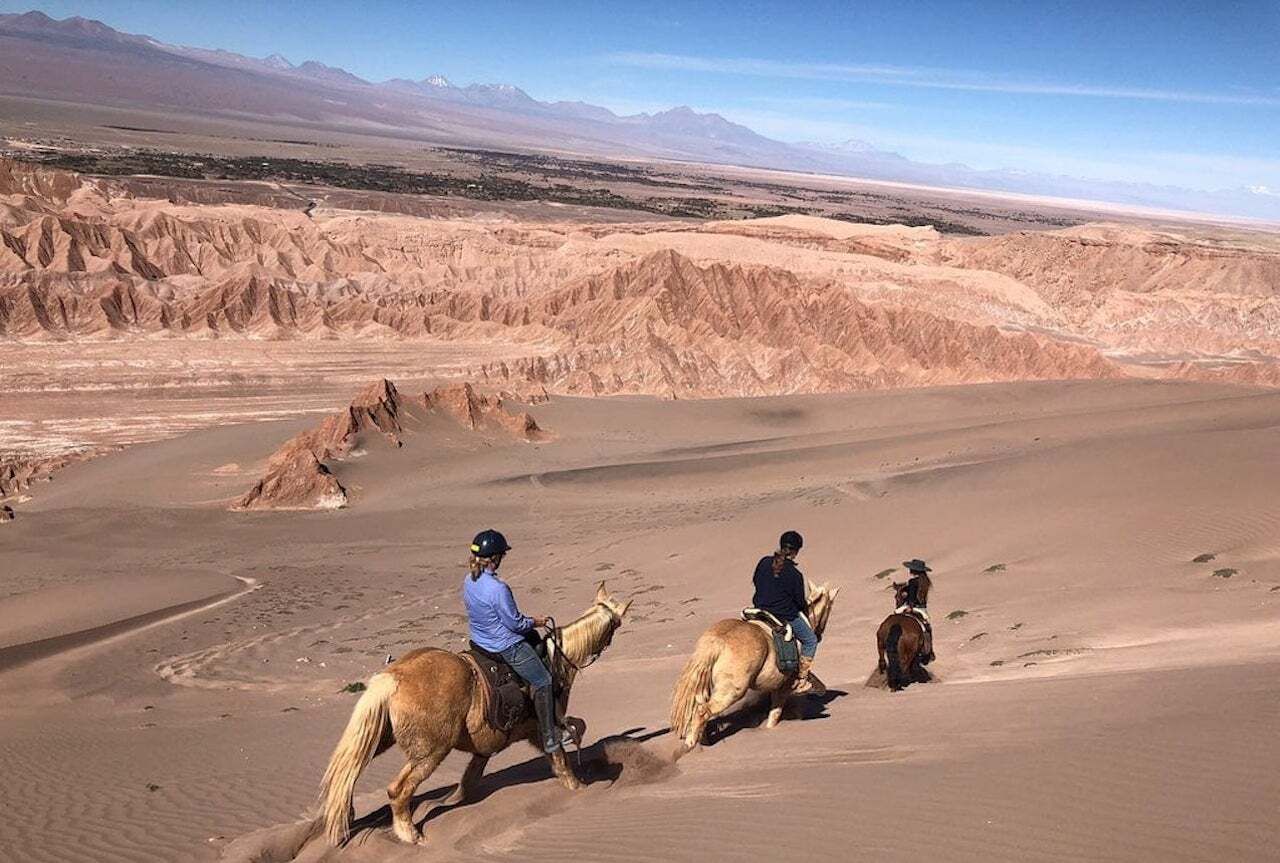
Photo: Atacama Horse Adventure/Facebook
On horseback, the immensity of the Atacama Desert feels amplified. Taking dedicated trails across sand dunes and through photo-famous canyons will make you feel like a Morochuco — a Peruvian cowboy. No previous horseback riding experience is required, as you’ll be led by expert wranglers.
Most horseback tours are either half-day or full-day excursions, but some horse ranches offer multiple-day treks with overnight camping. A full day riding can cost anywhere from $120 to $250, depending on the ranch you book your tour with. Most full-day riding tours include lunch in the desert, but be sure to pack your own water and some snacks for extra sustenance. There are a few tour operators running trips, but Atacama Horse Adventure and Rancho Cactus offer two of the better experiences.
Hot air balloon ride
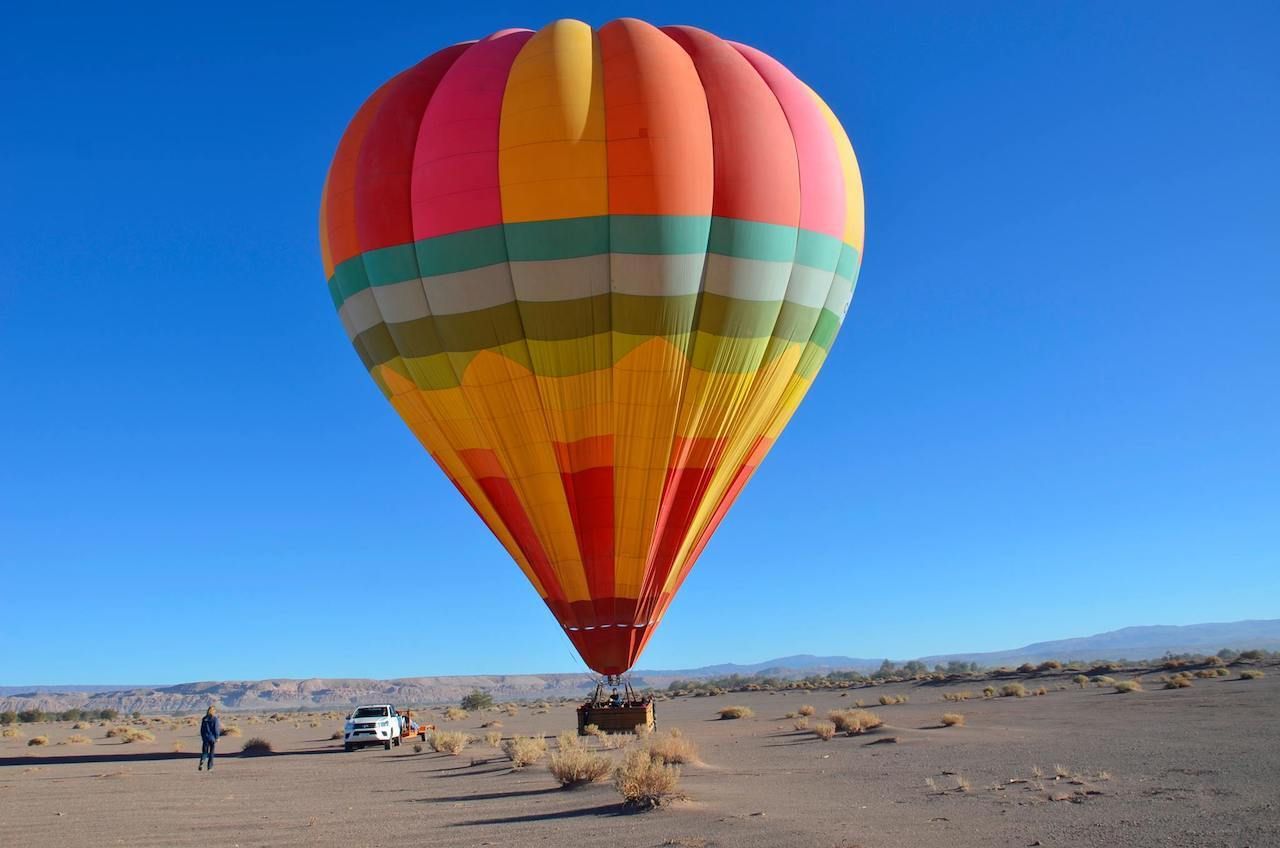
Photo: Phaway Atacama Ballooning Experience/Facebook
One of the spendier things to do in the Atacama Desert is taking a hot air balloon ride at sunrise. You’ll find yourself soaring above local landmarks like the Valle de la Luna, Volcano Licancabur, and Laguna Cejar, appreciating the desert’s vastness from above.
Typically, the ballooning company you booked your ride with will pick you up from your hotel before dawn. You’ll be transported into the desert, where giant, colorful balloons are laid out on the ground, being prepared for your flight. The duration of the hot air balloon journey depends on the local weather conditions, primarily the wind. Rides start at roughly $250 per person. It’s very cold in the early mornings, so wear warm layers to ensure yourself a comfortable flight. One of the most reputable companies offering tours is the Phaway Atacama Ballooning Experience.
Sandboarding
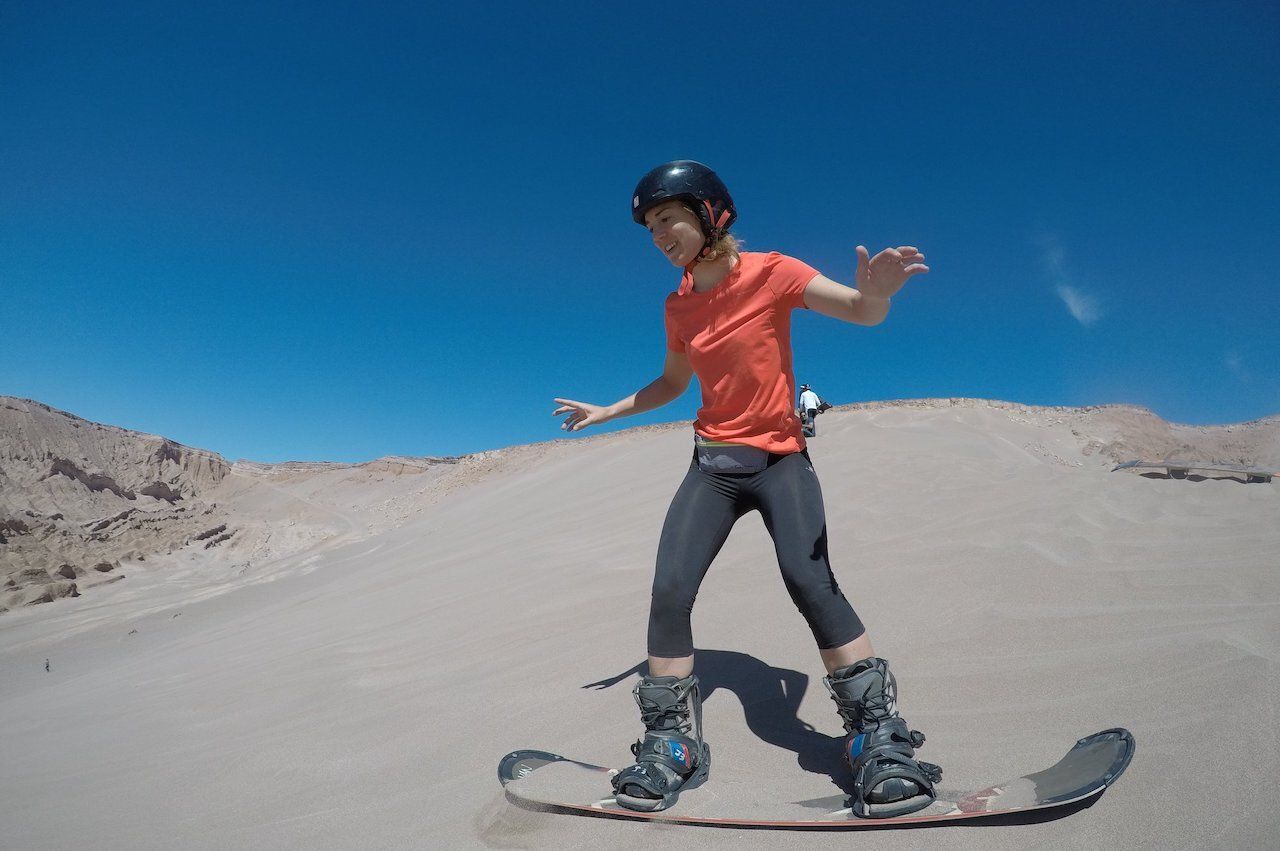
Photo: Sandboard San Pedro de Atacama/Facebook
Somewhere between surfing and snowboarding lies sandboarding. The extreme sport dates back to the ancient Egyptians, but it’s a long-standing favorite among tourists visiting the Atacama. The name of this sport kind of gives it all away: Essentially, you ride a board along the top of a sand dune right down to its base. Sandboarding guides will supply you with helmets, elbow and knee pads, and the board you’ll be using to glide. You can book your sandboarding excursion in San Pedro’s town center, and you’ll often get a better price by doing so in person since most operators try to beat their competitors. That said, if you’d like to organize in advance, Sandboard San Pedro offers excellent experiences.
Stargazing
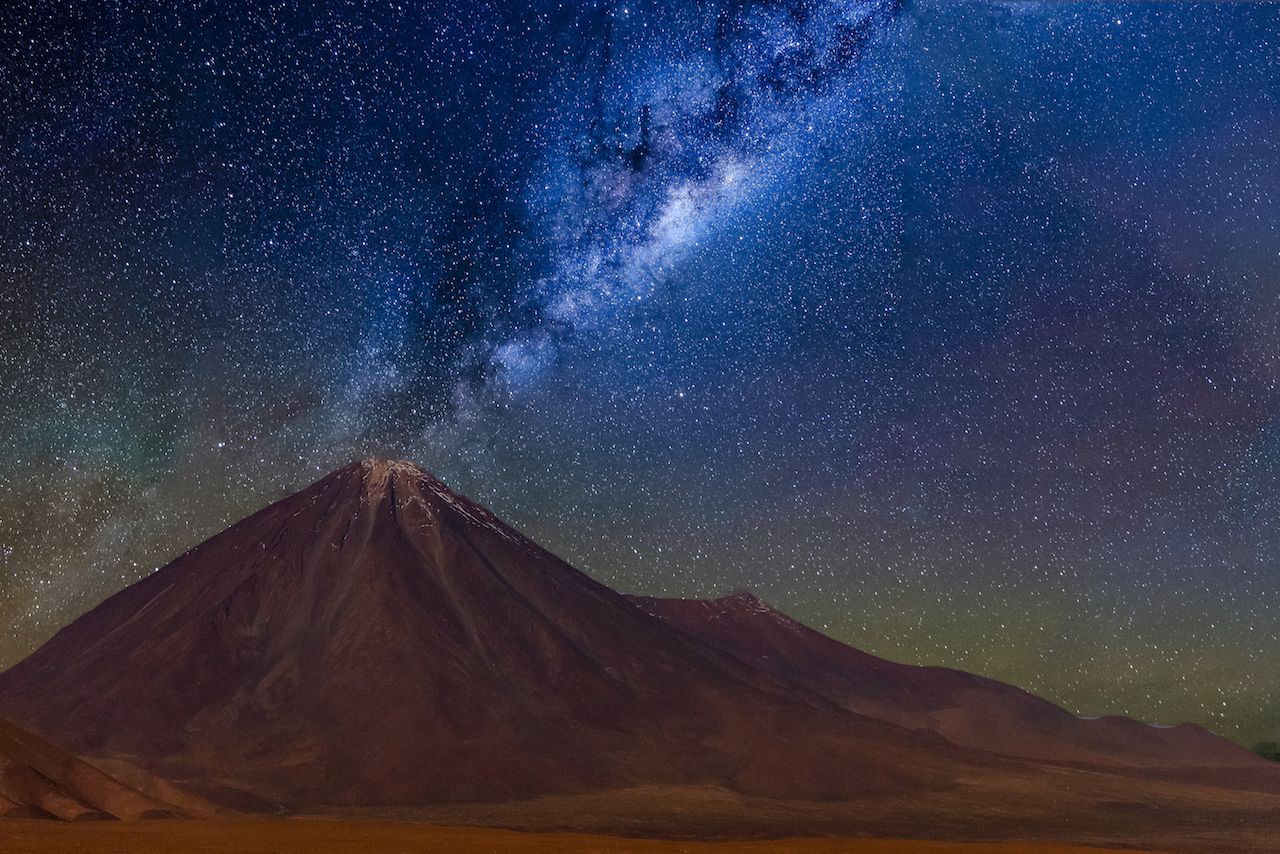
Photo: Fotografo de los Andes/Shutterstock
The absence of skyscrapers or spotlights makes the Atacama ideal for spending an evening enjoying the wonders of the nights’ sky. Unlike the Northern Lights phenomenon in the opposite hemisphere, seeing the stars in the Atacama is a sure thing. Astronomers have called it one of the best places on Earth to study the sky because it’s at a high altitude and devoid of precipitation, which not only causes cloud coverage but also distorts images viewed via telescopes.
SPACE is highly reputable for its stargazing tours, but there are plenty to choose from in town. Stories of the constellations in the pitch-black are offered in French, Spanish, English, and German, so make sure you book the right tour language for you. Like rental cars, stargazing tours book up well in advance — and usually only occur during moonless evenings — so don’t hesitate to make a reservation if you do want a guide.
There’s always the option to stargaze without a tour group, but doing it on your own will mean you miss hearing the local myths attached to major star clusters. Tours also include the bonus of looking at the stars through a telescope.